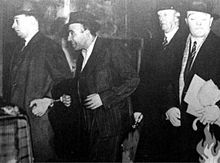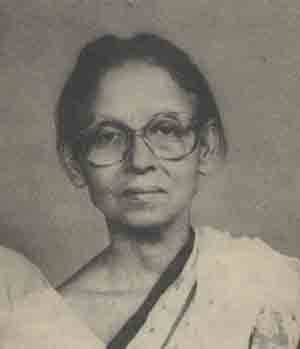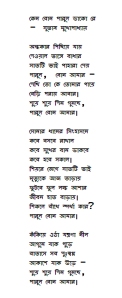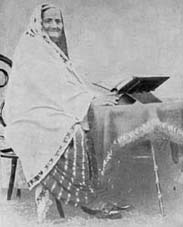 Udham Singh (December 26, 1899 – July 31, 1940) was an Indian
revolutionary socialist, best known for assassinating Michael O'Dwyer in March 1940 in what has
been described as an avenging of the Jallianwalla Bagh Massacre.
Udham Singh (December 26, 1899 – July 31, 1940) was an Indian
revolutionary socialist, best known for assassinating Michael O'Dwyer in March 1940 in what has
been described as an avenging of the Jallianwalla Bagh Massacre.Singh changed his name to Ram Mohammad Singh Azad, symbolizing the unification of the three major religions of India: Hinduism, Islam and Sikhism. Singh is considered one of the best-known revolutionaries of the Indian independence struggle; he is also sometimes referred to as Shaheed-i-Azam Sardar Udham Singh (the expression "Shaheed-i-Azam," Urdu: شهید اعظم, means "the great martyr"). Bhagat Singh and Singh along with Chandrasekhar Azad, Rajguru and Sukhdev, were among the most famous revolutionaries in the first half of 20th-century India. For their actions, the British government labelled these men as "India's earliest Marxists".
Early life;
Singh was born in Shahpur Kalan village in Sunam Tehsil in Sangrur district of Punjab, India to a Sikh farming family headed by Sardar Tehal Singh Jammu (known as Chuhar Singh before taking the Amrit). Sardar Tehal Singh was at that time working as a watchman on a railway crossing in the village of Upalli. Sher Singh's mother died in 1901. His father followed in 1907.
With the help of Bhai Kishan Singh Ragi, both Sher Singh and his elder brother, Mukta Singh, were taken in by the Central Khalsa Orphanage Putlighar in Amritsar on October 24, 1907. They were administered the Sikh initiatory rites at the orphanage and received new names: Sher Singh became Udham Singh, and Mukta Singh became Sadhu Singh. Sadhu Singh died in 1917, which came as a great shock to his brother. While at orphanage, Singh was trained in various arts and crafts. He passed his matriculation examination in 1918 and left the orphanage in 1919.
Massacre in Jallianwala bagh;
On April 13, 1919, over twenty thousand unarmed Indians (Sikhs & Hindus), peacefully assembled in Jallianwala Bagh, Amritsar, to listen to several prominent local leaders speak out against British colonial rule in India and against the arrest and deportation of Dr. Satya Pal, Dr. Saifuddin Kitchlew, and few others under the unpopular Rowlatt Act. Singh and his friends from the orphanage were serving water to the crowd.
Not much later, a band of 90 soldiers armed with rifles and khukris (Gurkha short swords) marched to the park accompanied by two armoured cars with mounted machine guns. The vehicles were unable to enter the Bagh owing to the narrow entrance. Brigadier-General Reginald Dyer was in command. The troops had entered the Bagh by about 5:15 PM. With no warning to the crowd to disperse, Dyer ordered his troops to open fire. The attack lasted ten minutes. Since the only exit was barred by soldiers, people tried to climb the walls of the park. Some also jumped into a well inside the compound to escape the bullets. A plaque in the monument says that 120 bodies were plucked out of the well alone.
Revolutionary activity;
Singh mainly held Michael O'Dwyer responsible for what came to be known as the Amritsar Massacre. New research supporting this fact reveal the massacre to have occurred with the Governor's full connivance "to teach the Indians a lesson, to make a wide impression and to strike terror throughout Punjab". The incident had greatly shaken young Singh and proved a turning point in his life. After bathing in the holy sarovar (pool of nectar), Singh took a silent vow and solemn pledge in front of the Golden Temple to wreak a vengeance on the perpetrators of the crime and to restore honour to what he saw as a humiliated nation.
Singh plunged into active politics and became a dedicated revolutionary. He left the orphanage and moved from one country to another to achieve his secret objective, aiming ultimately to reach his target in London. At various stages in his life, Singh went by the following names: Sher Singh, Udham Singh, Udhan Singh, Ude Singh, Uday Singh, Frank Brazil (American alias)and Ram Mohammed Singh Azad. He reached Africa in 1920, moving to Nairobi in 1921. Singh tried for the United States but was unsuccessful. He returned to India in 1924, reaching the U.S. that same year. There Singh became actively involved with members of the Ghadar Party, an Indian group known for its revolutionary politics and its founder, Sohan Singh Bhakna. Singh spent three years in revolutionary activities in the U.S. and organised Overseas Indians for the freedom struggle. He returned to India in July 1927 on orders from Bhagat Singh. He was accompanied by 25 associates from the U.S. and brought a consignment of revolvers and ammunition.
On 30 August 1927 Singh was arrested at Amritsar for possession of unlicensed arms. Some revolvers, a quantity of ammunition, and copies of a prohibited Ghadar Party paper called "Ghadr-i-Gunj" ("Voice of Revolt") were confiscated. He was prosecuted under section 20 of the Arms Act. Singh was sentenced to five years rigorous imprisonment. He stayed in jail for four years, missing the peak of India's revolutionary period and the actions of men like Bhagat Singh and Chandrasekhar Azad. Bhagat Singh was executed at the gallows with his fellow revolutionaries Rajguru and Sukhdev on March 23, 1931, for the murder of Deputy Superintendent of the Police J. P. Saunders, while Singh was still in jail.
Singh was released from jail on 23 October 1931. He returned to his native Sunam, but constant harassment from the local police on account of his revolutionary activities led him back to Amritsar. There he opened a shop as a signboard painter, assuming the name of Mohammed Singh Azad.
For three years, Singh continued his revolutionary activities in Punjab and also worked on a plan to reach London to assassinate O'Dwyer. His movements were under constant surveillance by the Punjab police. He visited his native village in 1933, then proceeded to Kashmir on a clandestine mission, where he was able to dupe the police and escaped to Germany. Singh ultimately reached London in 1934 and took up residence at 9 Adler Street, Whitechapel (East London) near Commercial Road. According to the secret reports of British Police, Singh was on the move in India till early 1934, then he reached Italy and stayed there for 3–4 months. From Italy he proceeded to France, Switzerland and Austria and finally reached England in 1934 where he purchased and used his own car for travelling purposes. He joined the Indian Workers' Association, a socialist organization in London. His real objective however, always remained Michael O'Dwyer. Singh also purchased a six-chamber revolver and a load of ammunition. Despite numerous opportunities to strike, Singh awaited a right time when he could make more impact with the killing and attract global attention to his cause.
Shooting in Caxton Hall
The opportunity came on 13 March 1940, almost 21 years after the Jallianwala Bagh killings: A joint meeting of the East India Association and the Central Asian Society (now Royal Society for Asian Affairs) was scheduled at Caxton Hall, and among the speakers was Michael O'Dwyer. Singh concealed his revolver in a book specially cut for the purpose and managed to enter the hall. He took up his position against the wall. At the end of the meeting, the gathering stood up, and O'Dwyer moved towards the platform to talk to Zetland. Singh pulled his revolver and fired. O'Dwyer was hit twice and died immediately. Then Singh fired at Zetland, the Secretary of State for India, injuring him but not seriously. Incidentally, Luis Dane was hit by one shot, which broke his radius bone and dropped him to the ground with serious injuries. A bullet also hit Lord Lamington, whose right hand was shattered. Singh did not intend to escape. He was arrested on the spot.His weapon, a knife, his diary, along with a bullet fired on the day are now kept in the Black Museum of Scotland Yard.
Reaction to O'Dwyer assassination
Back in India, there was a strong reaction to this assassination. While the Congress-controlled English speaking press of India condemned Singh's action in general terms, independents like Amrit Bazar Patrika and New Statesman took different views. In its March 18, 1940 issue, Amrit Bazar Patrika wrote, "O'Dwyer's name is connected with Punjab incidents which India will never forget". New Statesman observed: "British conservatism has not discovered how to deal with Ireland after two centuries of rule. Similar comment may be made on British rule in India. Will the historians of the future have to record that it was not the Nazis but the British ruling class which destroyed the British Empire?"Indians all over regarded Singh's action as justified and an important step in India's struggle to end British colonial rule in India. At a public meeting in Kanpur, a speaker stated that "at last an insult and humiliation of the nation had been avenged". In 1940, Britain was in the midst of fighting for its survival in Europe and depended heavily on supplies from India to support the war effort. Nervous about any threat to their wartime supply lifelines from the heartlands of India, the British Government in India would receive fortnightly reports on the political situation sent from local administrators all over India. In several such reports, local administrators would quote local leaders (who were usually sympathetic to British rule) as saying "It is true that we had no love lost for Michael O'Dwyer. The indignities he heaped upon our countrymen in Punjab have not been forgotten". Similar sentiments were expressed at numerous other places country-wide.
This groundswell of anti-British feeling, say many historians, served as the launch pad for Mahatma Gandhi's Quit India movement launched two years later in 1942.
In a statement to the Press, Mahatama Gandhi had condemned the 10 Caxton Hall shooting saying that "the outrage has caused me deep pain. I regard it as an act of insanity...I hope this will not be allowed to affect political judgement". A week later, Harijan, his newspaper further wrote: "We had our differences with Michael O'Dwyer but that should not prevent us from being grieved over his assassination. We have our grievances against Lord Zetland. We must fight his reactionary policies, but there should be no malice or vindictiveness in our resistance. The accused is intoxicated with thought of bravery".
Pt Jawaharlal Nehru wrote in his National Herald: "Assassination is regretted but it is earnestly hoped that it will not have far-reaching repercussions on political future of India. We have not been unaware of the trend of the feeling of non-violence, particularly among the younger section of Indians. Situation in India demands immediate handling to avoid further deterioration and we would warn the Government that even Gandhi's refusal to start civil disobedience instead of being God-send may lead to adoption of desperate measures by the youth of the country". Netaji Subhas Chandra Bose was the only public leader of great importance who approved of Singh's action. Bose advocated the approach that the political instability of war-time Britain should be taken advantage of—rather than simply wait for the British to grant independence after the end of the war (which was the view of Gandhi, Nehru and a section of the Congress leadership at the time). Bose advocated a campaign of mass civil disobedience to protest against Viceroy Lord Linlithgow's decision to declare war on India's behalf without consulting the Congress leadership. Having failed to persuade Gandhi of the necessity of this, Bose organised mass protests in Calcutta. As R.C. Aggarwara writes in his 'Constitutional History of India and National Movement' the daring deed of Singh blew the bugle for renewed struggle of India's freedom struggle.
The Punjab section of Congress Party in the Punjab Assembly led by Dewan Chaman Lal had refused to vote for the Premier's motion framed to express abhorrence and condemnation of the 10 Caxton Hall outrage as well as to express sympathy with Lady O'Dwyer.
In the Annual Session of All India Congress Committee (April 1940) held at Ramgarh where a National Week (6 to 13 April) in commemoration of 21st anniversary of Jallianwala Bagh Massacre was being observed, the youth wing of the Indian National Congress Party started raising revolutionary slogans "Udham Singh Zindabad", "Long Live Udham Singh" and "Inquilab Zindabad" in support of Singh approving and applauding his action as patriotic and heroic.
The Indian Government's own secret reports abundantly reveal that the murder of O'Dwyer had proved a catalyst to ignite and excite great satisfaction among the people of India.
Most of the press worldwide remembered the story of Jallianwala Bagh and held Michael O'Dwyer fully responsible for the events. Singh was called "fighter for freedom" by The Times of London, and his action was said to be "an expression of the pent-up fury of the downtrodden Indian People". Bergeret, published in large-scale from Rome at that time, ascribed the greatest significance to the circumstance and praised Singh's action as courageous. Berliner Borsen Zeitung called the event "The torch of the Indian freedom", and German radio repeatedly broadcast: "The cry of tormented people spoke with shots". and "Like the elephants, the Indians never forgive their enemies. They strike them down even after 20 years".
Trial and execution
While in Police custody, Singh remarked: "Is Zetland dead? He ought to be. I put two into him right there", indicating with his hand the pit of his stomach on the left side. Singh remained quiet for several minutes and then again said: "Only one dead, eh? I thought I could get more. I must have been too slow. There were a lot of women about, you know".Singh was convicted, and Atkinson sentenced him to death. On 31 July 1940, Singh was hanged at Pentonville Prison. As with other executed prisoners, he was buried later that afternoon within the prison grounds. In March 1940, Indian National Congress leader Jawahar Lal Nehru, condemned the action of Singh as senseless, but in 1962, Nehru reversed his stance and applauded Singh with the following statement in the daily Partap: "I salute Shaheed-i-Azam Udham Singh with reverence who had kissed the noose so that we may be free."
The Hindustan Socialist Republican Army condemned Mahatama Gandhi's statement referring to Bhagat Singh as well as also to the capital punishment of Singh, which it considered to be a challenge to the Indian Youths.
Repatriation
In July 1974, Singh's remains were exhumed and repatriated to India at the request of S. Sadhu Singh Thind, an MLA from Sultanpur Lodhi at that time. He asked Indira Gandhi to request that the then-British Government hand over Singh's remains to India. Sadhu Singh Thind himself went to England as a special envoy of the Indian Government and brought back the remains of the Shaheed. He was given a martyr's reception. Among those who received his casket at Delhi airport were Shankar Dayal Sharma, then president of the Congress Party, and Zail Singh, then chief minister of Punjab, both of whom later went on to become Presidents of India. Indira Gandhi, the prime minister, also laid a wreath. He was later cremated in his birthplace of Sunam in Punjab and his ashes were immersed in the Sutlej river.
In popular culture
- Shaheed Udham Singh (1977)
- Jallian Wala Bagh (1977)
- Shaheed Udham Singh (2000)
- Shaheed Udham Singh (2013)
- Shaheed Udham Singh Museum - Amritsar
- Udham Singh nagar district in Uttarakhand.
- Singh is the subject of the 1998 track "Assassin" by Asian Dub Foundation.
Books and Journals
- Udham Singh alias Ram Mohammad Singh Azad, prof (Dr) Sikander Singh (A research book).
- Emergence of the Image: Redact Documents of Udham Singh/edited by Navtej Singh and Avtar Singh Jouhl, New Delhi, National Book Organisation, 2002.
- Challenge to Imperial Hegemony: The life of A Great Indian Patriot Udham Singh, Navtej Singh.
- Sardar Udham Singh, Hoshiarpore, 1969, B. S. Maigowalia.
- India's Freedom Fighters Udham Singh, Nasik, 1983, K. K. Khullar.
- How Udham Singh Avenged the Jallianwala, Bagh Massacre, MD University, Research Journal, Arts, Vol 2, No 2, October, 1987.
- Jallian Wala Bagh Massacre and its Impact on Udham Singh, Proceedings of Punjab History Conference, 21st session, March 27–29, 1987, Punjab University Patiala.
- Sade Shaheed, Giani Bhajan Singh, (Punjabi), Jullundhur.
- Shaheed Udham Singh Sunam te Jallianwala Bagh, Amritsar, 1979.
- Bhartia Da Gaurav, Sardar Udham Singh, 1975, J. N. Sandhey.
- Jallianwala Bagh Massacre—A pre-Meditated Plan, Punjab University, chandigarh, 1969, Raja Ram.
- Jeevani Shaheed Udjham Singh, (Punjabi), Patiala, 1988.
- Eminent Freedom Fighters of Punjab, Punjabi University, Patiala, 1972, Dr Fauja Singh.
- Babbar Akali Movement, Dr Gurcharana Singh.
- Sunam Da Surma, Sardar Udham Singh, Jullundur, 1982, Dr Gurcharana Singh.
- Shaheed Udham Singh, National Press of India, Delhi, 1973, Kesar Singh.
- Inqulabhi Yodha Udham Singh, Khalsa Sikh Orphanage, Amritsar, 1974.
- Shaheed Udham Singh alias Ram Mohammad Singh Azad, 1974, K. C. Vashishat.
- Jallainwala Bagh and the Raj, Jallian Wala Bagh, Commemoration Vol, Patiala.
- Udham Singh, The Patriot who Avenged the Jallianwala Bagh Massacre, M. S. Gill, I.A.S, The Illustrated Weekly of India, Jan 30, 1972.
- Amritsar: The Massacre that Ended the Raj, London, 1981, Alfred Draper.
- Several Secret Files Released by Public Record Office, London.
- Several Classified and closed files released by National Archives of India, New Delhi.
- Several Unpublished and Original Sources (Udham Singh alias Ram Mohammad Singh Azad, 2002, p 377-391, Prof Sikander Singh).



 ( Vidyasagar's House in Calcutta) Vidyasagar in Calcutta and many other reformers in Bombay set up schools for
girls. Vidhyasagar was associated with other reformers, who founded schools for
girls like
( Vidyasagar's House in Calcutta) Vidyasagar in Calcutta and many other reformers in Bombay set up schools for
girls. Vidhyasagar was associated with other reformers, who founded schools for
girls like 























